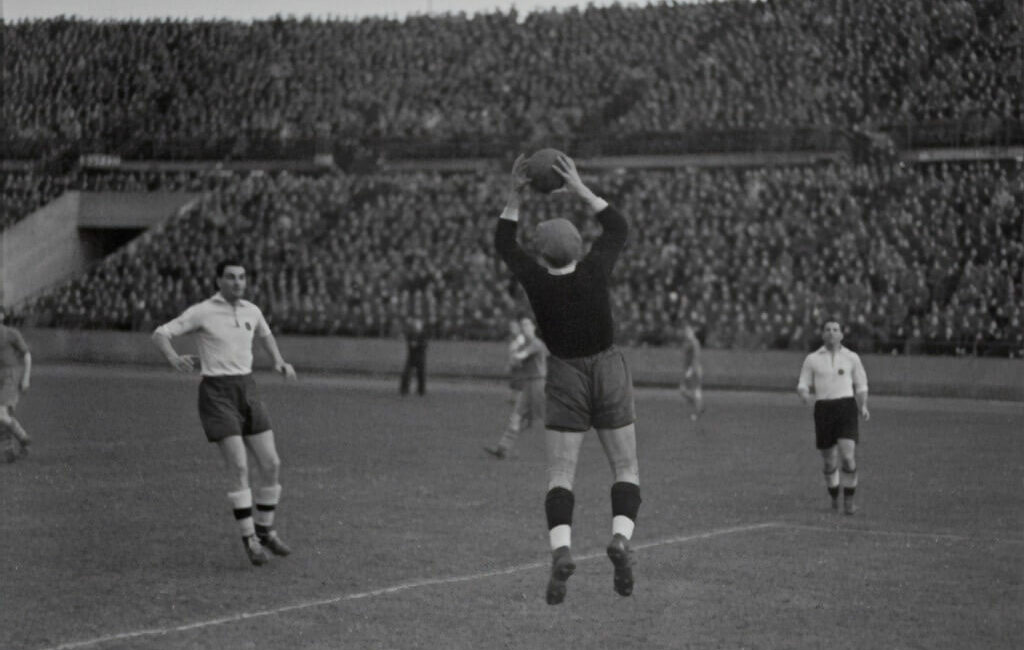- CCTV Setup Guide, Why You ShouldInstall It - February 6, 2024
- Did Fidel Castro Almost Join MLB? - November 28, 2023
- Chastity Belt Myth of the Middle Ages - November 27, 2023
As the final buzzer heralds victory, the jubilant scenes on the basketball court are not just about winning a game but also about embracing a storied tradition. The “cutting of the nets” ritual, a poignant moment where triumphant teams snip the net as a keepsake, is steeped in the rich history of basketball. This tradition, deeply rooted in the state of Indiana, has become a symbol of victory and a tangible memory of success in the sport.
Everett Case’s response in his 1919 high school yearbook, declaring his ambition to be a basketball coach, was remarkably prescient. His passion for basketball was evident long before the sport captured the American psyche. Case’s early dedication to basketball was not just a personal ambition but a foresight into the future of the sport.
Contrary to the assertion in the original article, Everett Case did not attend the University of Wisconsin-Green Bay. He went to the University of Wisconsin-Madison before studying under Ralph Jones at the University of Illinois. Jones, a pivotal figure in Indiana high school basketball, greatly influenced Case’s coaching style and philosophy.
At just 22, Case became the head coach at Frankfort High in Indiana, chosen from a competitive field of applicants. His tenure at Frankfort was marked by remarkable success, including multiple state championships. It was here that the tradition of cutting the basketball nets began, a practice Case encouraged to help his players remember their victories.
Case’s patriotic fervor led him to join the Navy at the age of 41, leaving behind his coaching career. His organizational and coaching skills didn’t go unnoticed in the Navy, where he served as the assistant athletic director and director of basketball. His commitment to basketball continued even amid his naval service.
After World War II, Case brought his coaching expertise to North Carolina State University, immediately leading them to consecutive Southern Conference titles. His attempt to cut the nets at NC State without a ladder, harkening back to his days at Frankfort High, signified the migration of this Hoosier tradition to a national stage.
Everett Case’s influence extended beyond conference titles. He transformed North Carolina into a basketball-centric state, an impressive feat in a region traditionally focused on football. He played a crucial role in popularizing the postseason tournament and influenced NCAA policies, including automatic tournament entry for conference champions.
The final years of Case’s life were marked by a courageous battle with multiple myeloma. Despite the pain and challenges, he remained closely connected to basketball. His last act of cutting the net, while being supported by his team, was a powerful and emotional moment, epitomizing the deep bonds and lasting impact he had in the sport.
Everett Case passed away 18 months after his final net-cutting ceremony, leaving behind a rich legacy in college basketball. His impact is still felt today, not only in the continued tradition of net cutting but also in the way he shaped the sport, particularly in North Carolina. His enshrinement in the Basketball Hall of Fame in 1982 was a fitting tribute to a man who was much more than a coach – a visionary who deeply influenced the game of basketball.
Bonus Basketball Facts
- When you celebrate your achievements, consider creating your unique traditions, much like the playing of “One Shining Moment” in the NCAA basketball tournament. This tradition started in 1987 and has since become a staple in commemorating the journey and triumphs of the teams. Like this enduring song, your personal or professional milestones can be marked with meaningful rituals that reflect your journey and successes.
- You can draw inspiration from the story of Ralph C. Jones, who before mentoring Everett Case, achieved remarkable success at Wabash College and Purdue. When you seek guidance in your endeavors, look to the legends in your field, those who have not only succeeded but have also left a lasting impact. Their journeys can offer invaluable lessons and insights that can shape your path to success.
- The evolution of the ACC, from its original members to its current diverse lineup, illustrates the importance of expanding your horizons. Like the ACC, which now includes teams beyond the Atlantic coast, don’t limit your aspirations to your immediate environment. Broaden your scope and seek opportunities that may initially seem outside your realm, as they can lead to unexpected and rewarding growth.
- Although basketball is quintessentially American, its popularity has spread globally. Today, it’s one of the most played and watched sports worldwide, with major international competitions and a strong presence in the Olympics.
- When Dr. James Naismith invented basketball in 1891, he used a soccer ball as the first basketball. The first hoops were actually just peach baskets, and the ball had to be manually retrieved after each score.
- The modern basketball hoop with a breakaway rim was only introduced in 1976. This innovation was crucial in reducing injuries and damages during dunk shots.
- Women’s basketball began just a year after the men’s game was invented. Senda Berenson adapted Naismith’s rules for women in 1892, emphasizing teamwork and cooperation.
- The first known professional basketball game was played in 1896 in Trenton, New Jersey, between the Trenton YMCA and the Brooklyn YMCA.
- The NBA was integrated in 1950 when Earl Lloyd, Chuck Cooper, and Nat Clifton entered the league. This was a significant step forward in the racial integration of professional sports in America.
- The 24-second shot clock was introduced in the NBA in 1954 to prevent teams from stalling the game. This rule change dramatically increased the pace and scoring of the game.
- The first-ever televised college basketball game was in 1940, a matchup between Fordham University and the University of Pittsburgh. This broadcast marked the beginning of basketball’s rise as a popular televised sport.
- The longest basketball game in history was played on January 6, 1951, between the Indianapolis Olympians and the Rochester Royals. The game went to six overtimes and lasted 78 minutes of playing time.
- The International Basketball Federation, or FIBA, was founded in 1932. It was formed by eight countries: Argentina, Czechoslovakia, Greece, Italy, Latvia, Portugal, Romania, and Switzerland. Today, FIBA oversees international basketball competitions and governs the rules of the game globally.
The Influence of the Net on Shooting Accuracy
The presence of a net on a basketball hoop might seem trivial, but it can actually affect a player’s shooting accuracy. A study revealed that players had a slightly higher shooting accuracy (57.71%) when the net was removed compared to when the net was on (54.86%). This suggests that the visual and psychological impact of the net can subtly influence shooting performance. The lower standard deviation with the net on indicates more consistent shooting, hinting at the net’s role in player perception and shot calibration.
Practical Benefits of the Basketball Net
Apart from its aesthetic appeal, the basketball net serves two practical functions. Firstly, it slows down the ball, making it easier for players to retrieve it after a successful shot. This is especially useful in fast-paced games, reducing the time spent chasing after the ball. Secondly, and perhaps more importantly, the net acts as a clear indicator of a successful shot, providing immediate visual confirmation that the ball has passed through the hoop.
Terminology: Hoop vs. Goal
In basketball, the terms ‘hoop’ and ‘goal’ are often used interchangeably, but they technically refer to different parts of the equipment. The hoop is the orange rim attached to the backboard, while the goal encompasses the entire setup, including the rim, backboard, and net. Understanding this terminology helps in appreciating the different components that make up a basketball system.
Improving Basketball Skills Without a Hoop
For players without access to a standard basketball hoop, skill development is still very much possible. Fundamental skills such as dribbling, passing, and footwork can be honed without a hoop. This emphasizes the importance of a well-rounded approach to training, where players focus on all aspects of the game, not just shooting.
Choosing the Right Basketball Net
When selecting a basketball net, players and facilities have options. Nets can be made from various materials like nylon or chain, each offering different durability and playability characteristics. The choice of net can affect the game’s pace and the auditory feedback from a successful shot, which some players find satisfying and motivational.
The story of Everett Case and the tradition of cutting the basketball nets is a tale of passion, innovation, and enduring legacy.

